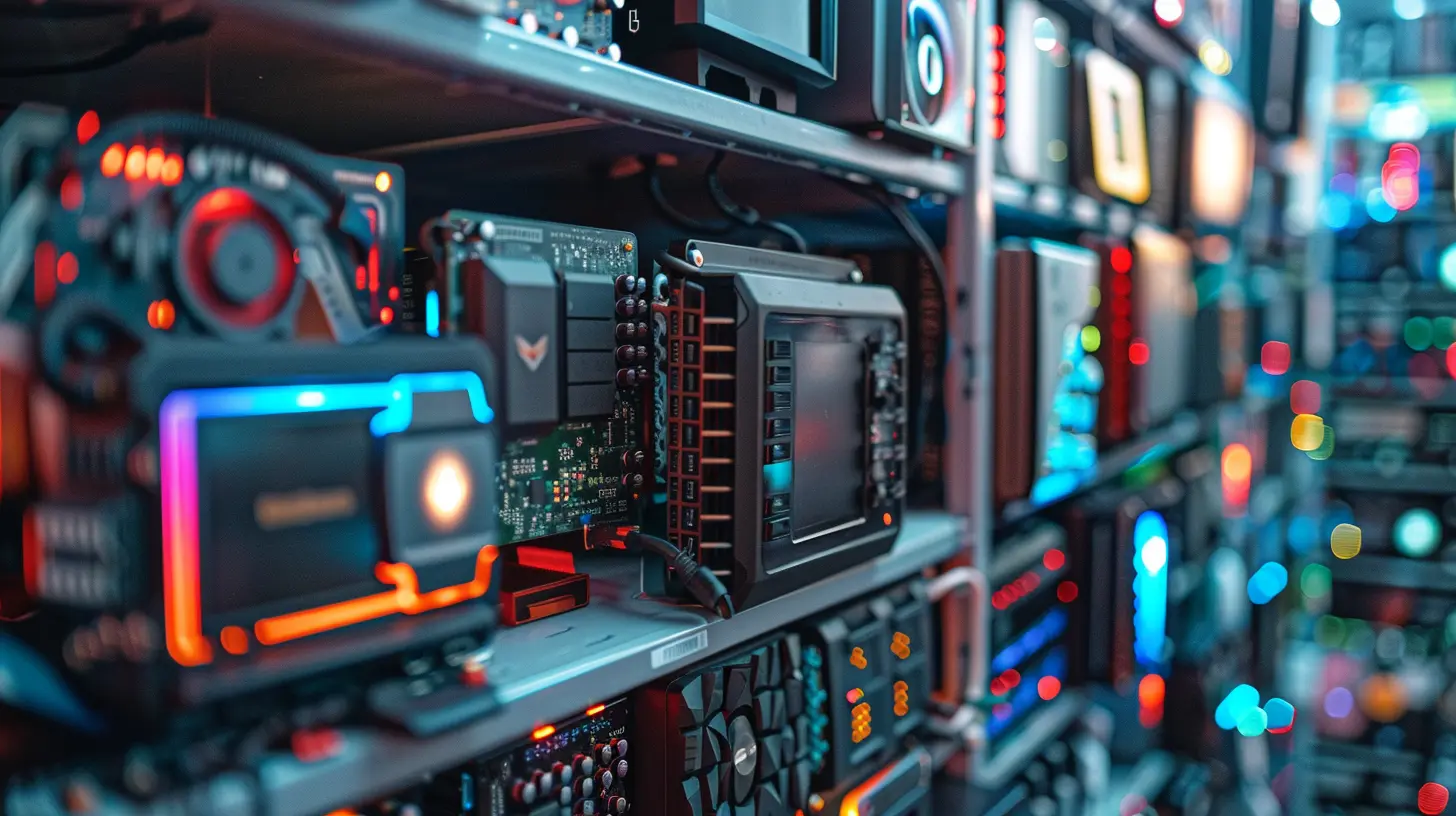How to Future-Proof Your Gaming System for Upcoming Releases
5 June 2025
So, you've finally stopped trying to run Elden Ring on a 10-year-old toaster and decided it's time to build or upgrade your gaming setup. Bravo! But before you go throwing your wallet at the latest GPU like it's Black Friday at a hardware store, let’s talk about future-proofing.
Yeah, I know, it sounds like one of those buzzwords tech YouTubers throw around while standing next to RGB-lit setups that probably cost more than your car. But stick with me—future-proofing your gaming system isn't about having the flashiest parts today. It's about being smart, thinking ahead, and making sure your rig doesn’t cry itself to sleep when future titles roll out.
So grab a drink, kick back, and let’s talk about how to set up a gaming system that won’t become obsolete by the next big Steam sale.
What the Heck Does “Future-Proof” Even Mean?
Let’s clarify something right off the bat. No gaming system is literally future-proof. Technology evolves faster than you can say “RTX On,” and that shiny new graphics card you just bought? It’s going to be “mid-range” in two years. Sorry, I don’t make the rules.But here’s the deal: future-proofing means getting the most bang for your buck today so you won’t need to play tech support for your own system every six months. It’s about building a PC that doesn’t break a sweat when the next big AAA game gets announced (and inevitably delayed).
Step 1: Don’t Cheap Out on the CPU (Your Game’s Brain)
Your CPU is like the manager of your gaming amusement park, deciding what gets done and how fast. If you give that job to a sleepy intern (aka a low-end chip), don’t blame the system when your frame rates fall flatter than a pancake.What to Look For:
- 6 cores minimum. If it doesn’t have at least 6 cores, it belongs in a museum.- Go for 12 or more threads. You want some multitasking juice.
- Stick with modern architectures — think AMD Ryzen 7000 series or Intel 13th or 14th Gen.
Honestly, investing in the CPU is like buying adult underwear. No one sees it, but it makes your whole day (or gaming session) way more comfortable.
Step 2: GPU – The Sexy Beast That Needs to Sweat Nothing
Ah yes, the graphics card: the one component you proudly show off like a flex on Instagram. And fair enough, your GPU will bear most of the burden when you're running visually intense games or cranking everything to Ultra while chasing 4K glory.Key Tips:
- Aim for at least 12GB of VRAM. Games are becoming ridiculously hungry.- Look for RTX 40-series or RX 7000-series if you’re buying new.
- Don’t go overkill unless you’re planning to game at 4K or run triple monitors like you're piloting a spaceship.
And let’s be honest: no, you probably don’t need the RTX 4090 unless you’re also trying to power your neighbor’s house. But a solid mid-to-high-end GPU today will keep your gaming smooth for the next few years.
Step 3: RAM – Because Multitasking Is a Way of Life
Think of RAM like your PC’s short-term memory. You want enough of it to run your game, your streaming software, Discord, 27 Chrome tabs, and whatever strange mods you’re testing at 2 a.m.The Short Version:
- Go for 32GB of DDR5 RAM if you can swing it. 16GB is the bare minimum, but games are getting greedier.- 3200 MHz or higher. Don’t bottleneck your performance with turtle-speed memory.
And yes, make sure they come with RGB. Not for performance—just to appease the tech gods.
Step 4: SSDs – Because Loading Screens Are So 2012
Still using a mechanical hard drive to store your games? What are you, an archaeologist?Pro Tip:
- NVMe SSDs. Fast, compact, and they load games faster than you can say “Open World.” Gen 4 NVMe drives are the sweet spot.- Aim for at least 1TB. Games in 2024 be like, “Hi, I’m 150GB. Nice to meet you.”
If you’ve never experienced booting into Windows in less than 10 seconds, prepare to have your mind blown.
Step 5: The Motherboard – Your Gaming Rig’s Unsung Hero
It’s not glamorous, but your motherboard connects everything, like the group chat for your components. You don’t want to cheap out here, or you’ll deal with compatibility issues faster than you can say “why isn’t this booting?”Essentials:
- Support for PCIe 5.0 (future-proof, remember?)- At least two M.2 slots
- DDR5 support for memory longevity
Spend a little extra here now, and your future upgrades won’t feel like assembling IKEA furniture without instructions.
Step 6: Go Big on the PSU (Power Supply Unit)
This one’s simple. DO NOT CHEAP OUT HERE. A bad PSU is like a bad heart; you won’t know there’s a problem until it randomly gives out and takes your whole setup with it.Final Verdict:
- Get a respectable 80+ Gold certified PSU- Make sure it has enough wattage for your future upgrades. 750W is the new sweet spot.
Trust me, future-you will thank current-you when they're not replacing fried components.
Step 7: Cooling – Keep Things Chill, Literally
Modern games are intense. You don’t want your rig to sound like a jet engine taking off or your CPU to hit temperatures hot enough to fry an egg.Must-Haves:
- A good air cooler or AIO liquid cooler (especially for high-end CPUs)- Case fans, and no, one fan doesn’t count
- Positive airflow setup to avoid collecting enough dust to start a compost pile
Heat = performance loss = rage-quitting. Don’t skimp.
Step 8: Monitor & Peripherals – Because Future-Proofing Isn’t Just About Internals
You bought the best GPU in town, and you’re playing on a 60Hz monitor from 2013? Buddy, we need to talk.For Display Awesomeness:
- 144Hz refresh rate or higher is the standard now- 1440p or 4K resolution if you're into visual fidelity
- Look for G-Sync or FreeSync for smoother gameplay (your eyes will thank you)
Oh, and future-proof your sanity with a mechanical keyboard and a decent gaming mouse. You’re investing in hours of gameplay—it shouldn’t feel like you're clicking with a potato.
Step 9: The Operating System – Yes, It Matters
Look, I get it. Nobody likes updating Windows. But running Windows 7 in 2024 is like insisting on using a rotary phone. Most new games are optimized for newer OS versions. Just embrace Windows 11 and move on.Sure, it has its quirks, but it also supports DirectStorage tech, brand-new APIs, and oh yeah—your hardware won’t complain.
Step 10: The Upgrade Mentality – Always Be Plug-and-Play Ready
Future-proofing isn’t a one-and-done deal. It’s a mindset.Leave room for upgrades. Buy a case with expandable space, a motherboard with extra ports, and RAM slots you haven’t filled yet. That way, when your tax refund hits or you finally win a giveaway (hey, it could happen), you can slap in a new GPU or more memory without needing a complete overhaul.
Bonus: Cloud Gaming – The Wildcard You Might Want to Keep on Your Radar
We can’t talk about future-proofing without mentioning cloud gaming. Yeah, I know. The idea of streaming a game sounds like gaming’s version of fast food—quick, but not satisfying.But services like GeForce NOW, Xbox Cloud Gaming, and even Amazon Luna (yes, it exists) are getting shockingly good. While I wouldn’t suggest replacing your gaming rig with one yet, consider that as broadband gets faster, the gap between local and cloud gaming could shrink faster than anticipated.
So, would I build a PC today solely relying on the cloud? Not a chance. But would I keep an eye on it for the future? Absolutely.
Wrapping It All Up – Buy Smart, Game Smarter
If you’ve stuck with me this far, congrats. You now know more about future-proofing than most folks who impulse-buy hardware because it’s “on sale” without checking compatibility.Here’s the TL;DR:
- Invest in your CPU and GPU, but don’t overspend on bleeding-edge tech unless you’re an enthusiast.
- Pick parts that are upgrade-friendly, not locked down tighter than Fort Knox.
- Balance power, cooling, and performance instead of chasing clout and RGB overloads.
- And remember, no system is forever. But with the right build, yours can go the distance without aging like a banana in the sun.
So go ahead, future-proof that system like a boss and show those upcoming game releases who's in charge.
And no, you can’t future-proof against 200GB game updates. That’s a battle we’ve all lost.
all images in this post were generated using AI tools
Category:
System RequirementsAuthor:

Brianna Reyes
Discussion
rate this article
2 comments
Soren Wyatt
Great article! Future-proofing is essential in today’s gaming landscape. I’d suggest considering SSD upgrades for faster load times and ensuring your system meets or exceeds the recommended specs for upcoming titles. It’s all about maximizing performance for an enhanced gaming experience!
June 9, 2025 at 3:08 AM

Brianna Reyes
Thank you for your feedback! SSD upgrades and meeting recommended specs are definitely key to maximizing performance. Great suggestions!
Tilly Velez
This article offers valuable insights into preparing our gaming setups for future releases. It’s a reminder of how quickly technology evolves and the importance of strategic upgrades to ensure we keep up with exciting developments.
June 8, 2025 at 2:47 AM

Brianna Reyes
Thank you for your thoughtful comment! I'm glad you found the insights valuable for your gaming setup. Keeping up with technology is indeed essential for an optimal gaming experience!


